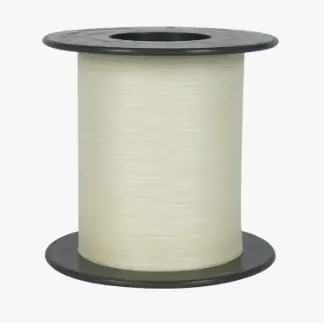Driven by the "dual carbon" policy and the global sustainable development wave, the textile industry is undergoing a profound green transformation. Among them, Recycled Yarn, as an important part of the circular economy, has become a hot topic in the industry due to its advantages in energy saving, emission reduction, and environmental protection.
What is recycled yarn? ——Green transformation from waste to new life
Recycled yarn is yarn made from recycled materials (such as waste clothing, plastic bottles, industrial scraps, etc.) after reprocessing. It is divided into two categories: chemically recycled recycled yarn and mechanically recycled recycled yarn.
Chemically recycled recycled yarn (such as rPET): usually uses polyester bottle flakes as raw materials, and finally produces high-quality yarn with performance close to that of original yarn through chemical treatment processes such as washing, melting, and spinning.
Mechanically recycled recycled yarn (such as recycled cotton yarn, recycled wool yarn): waste textiles are spun into new yarn after mechanical opening, combing, and mixing, but its fiber length is short and its strength is slightly poor, and it is mostly used in blended products.
The core advantage of recycled yarn - a model of green manufacturing
Energy saving and emission reduction, significantly reducing carbon footprint
Compared with virgin polyester, the production process of recycled polyester yarn (rPET) can reduce energy consumption by more than 70% and greenhouse gas emissions by more than 50%.
Resource reuse, promote circular economy
For every ton of recycled polyester yarn produced, approximately 70,000 discarded PET bottles can be recycled, greatly reducing the pollution of plastic to the environment.

Meet environmental standards and support brand ESG strategy
Recycled yarn is widely certified by GRS (Global Recycling Standard) and is favored by international brands such as Nike, H&M, adidas, etc.
Main types and performance analysis of recycled yarn
| type | Source of raw materials | Features | Application Scenario |
| Recycled Polyester Yarn (rPET) | Waste PET bottles | Strong and colorful | Sportswear, functional fabrics, bags |
| Recycled cotton yarn | Waste cotton fabric | Soft and highly absorbent | Denim, T-shirts, towels |
| Recycled wool yarn | Waste wool products | Good warmth retention and strong natural feel | Sweaters, coats, scarves |
| Regenerated nylon yarn (rNylon) | Waste fishing nets, industrial nylon | High strength and wear resistance | Swimwear, outdoor clothing, socks |
Production process of recycled yarn: a green closed loop from recycling to respinning
The production process of recycled yarn mainly includes:
Raw material recycling: recycling sources include plastic bottles, textile scraps, clothing factory waste cloth, etc.;
Pretreatment and cleaning: efficient removal of oil, dyes and impurities;
Reprocessing:
Chemical fibers such as rPET and rNylon need to be melt-spun;
Cotton uses traditional spinning processes such as mechanical opening, blending, and combing;
Spinning and shaping: use ring spinning, air spinning and other equipment to complete yarn formation;
Quality inspection and packaging: control color difference, strength, hairiness and other performance indicators to ensure factory quality.
Application areas include:
Apparel industry: fast fashion, sportswear, and casual wear widely use recycled fibers;

Home textile industry: quilt covers, sheets, curtains and other products focus on environmental protection properties;
Industrial fabrics: automotive interior fabrics, geotextiles, packaging tapes, etc. are also gradually adopting environmentally friendly raw materials.
From environmental protection concepts to commercial implementation, recycled yarn is gradually moving from a "supporting role" to the center of the stage. For textile manufacturers, deploying recycled yarn is not only a response to policies, but also a strategic choice to win the trust of the market and consumers. Green, traceable, and cost-effective recycled yarn is leading the global textile industry towards a sustainable future.

 English
English русский
русский Español
Español











